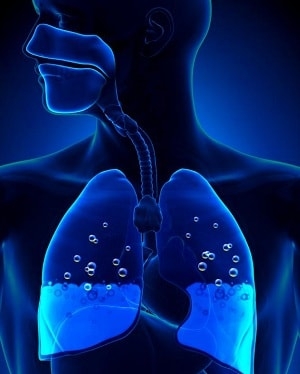Signs of pneumonia often frighten patients and their loved ones with their sudden and very acute manifestation, especially if it occurs against the background of infection with the flu or a respiratory infection, which often happens in the cold season. Fortunately, such a fear becomes an occasion to urgently consult a doctor. And this is good, since delay in prescribing adequate treatment in case of pneumonia can significantly aggravate its course, provoke terrible complications and, in general, lead to an unfavorable prognosis.
What signs of pneumonia are especially characteristic of this disease
Acute pneumonia starts suddenly. The patient experiences severe chills, has a very high temperature, complains of pain in the side & nbsp; in the chest – and so strong that he is afraid to cough and holds his breath. There is shortness of breath, dry cough, a feeling of exceptional weakness. The patient's face turns pale, the wings of the nose expand when inhaling, breathing is rapid, a feverish blush is possible on the cheeks – moreover, it can also appear on one cheek, the one on the side of the affected lung.
It must be remembered that pain in the chest can radiate to the abdominal region, so that the impression of an acute abdomen is created. The initial symptoms of pneumonia can be nausea and vomiting, flatulence, dry tongue. In severe cases, signs of liver damage may be added – the skin and sclera of the eyes become icteric.
 If the patient has problems with the heart and blood vessels, he may develop cyanosis spots around the mouth, on the body. From the onset of the disease, a strong tachycardia is manifested, a sharp decrease in pressure is possible.
If the patient has problems with the heart and blood vessels, he may develop cyanosis spots around the mouth, on the body. From the onset of the disease, a strong tachycardia is manifested, a sharp decrease in pressure is possible.
Practically all patients have signs of pneumonia related to changes in the nervous system: headaches, sleep disturbances, and at high temperature – severe agitation, confusion. Possible manifestation of meningeal symptoms – such as weakening of the neck muscles, skin hyperesthesia.
The intensity of manifestation of signs of pneumonia and the development of the clinical picture depends on the nature of the causative agent of the disease, on the general condition of the patient, on the timeliness of the treatment started, as well as on the presence of concomitant diseases.
Treatment options and signs of pneumonia confirming its effectiveness
Even with early treatment and its effectiveness, the symptoms of pneumonia persist for a long time, and the patient's condition remains severe. The temperature reaches 39-40 degrees in the very first hours from the onset of the disease and can remain so for several days, and then decrease very sharply (in a few hours) or gradually over 2-3 days. Along with a decrease in temperature, the signs of intoxication of the body decrease.
Signs of pneumonia become a direct indication for antibiotic therapy. In doing so, the following conditions must be observed:
- start treatment as early as possible,
- the prescribed doses of drugs and the intervals for taking them should ensure their constant therapeutic concentration in the blood and in the tissues of the lungs,
- The effectiveness of the treatment must be constantly monitored by radiography and bacteriological studies.
The choice of antibiotic is dictated by the definition of the pathogen and its sensitivity to the prescribed drugs, as well as individual contraindications, if the patient has them. If pneumonia has a viral-bacterial etiology, it is possible to prescribe a combination of antibacterial drugs – semi-synthetic penicillins and broad-spectrum drugs. With a very severe course of the disease, 2-3 drugs are prescribed simultaneously in maximum doses. If within two days the effect of the antibiotic is absent, it is replaced by another, taking into account the antimicrobial spectrum. In the absence of positive dynamics, corticosteroids are prescribed.
Recently, there has been a prolonged course of acute pneumonia, experts attribute this to the presence of concomitant diseases, including respiratory organs (chronic bronchitis), foci of infection in the body (such as tonsillitis, sinusitis). If treatment is started early and properly selected, complete recovery occurs around the end of the 3rd or 4th week, although residual effects in the form of dry wheezing and hard breathing may persist for up to six months.







Add a comment